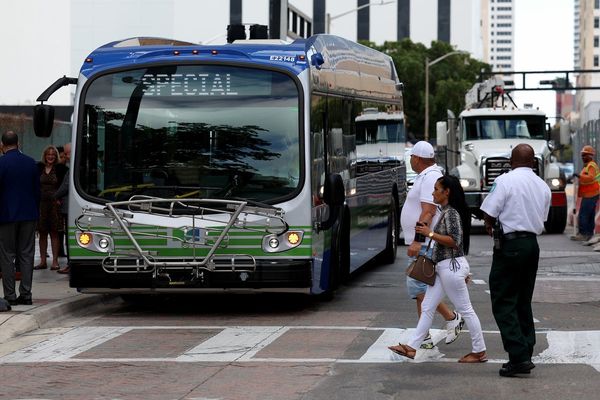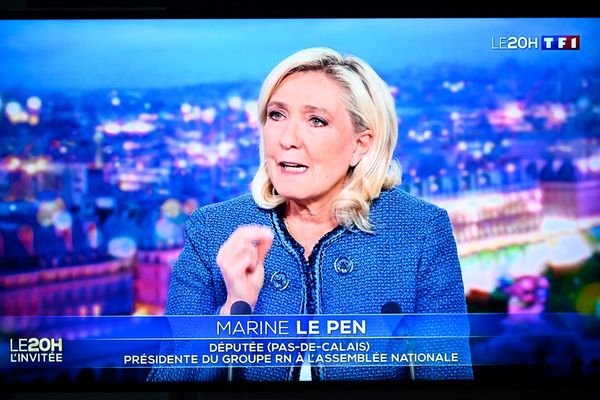The full extent of Liverpool's dangerously toxic air has been revealed.
While it may not be a surprise to many the city suffers with high levels of air pollution, new analysis shows just how big the problem is. The Central Office of Public Interest (COPI) has crunched the numbers and made it possible to see just how bad the air is that we are breathing across this city.
Liverpool has a well documented problem when it comes to air quality. In 2018, the city was named alongside Manchester and London in a list of 40 UK towns and cities that were at or had exceeded air pollution levels set by the World Health Organization. In 2020, it was reported more than 1,000 deaths a year across the wider Liverpool City Region could be linked to air pollution.
In its latest research, the COPI has revealed more than 97% of UK addresses now breach at least one of the World Health Organisation's limits for toxic pollutants. Looking at the data in Liverpool, many areas breach limits of all three toxic pollutants – nitrogen dioxide (NO2), particulate matter 2.5 (PM2.5) and particulate matter 10 (PM10).
READ MORE: Fury on Merseyside at Tory MP who said people using foodbanks 'can't cook properly'
Exposure to high concentrations of PM2.5 increases the chance of strokes and can also cause asthma, harm lung functions and promote cancer. PM10 can increase cardiovascular and respiratory mortality and cause wheezing, bronchitis and reduce lung development. Nitrogen Oxide exposure leads to increased risk of disease-related deaths.
COPI sourced and mapped the air pollution levels recorded at 20,000 sites in over 320 UK council areas. Using this data and DEFRA-approved council data, experts at Imperial College London generated a national model, so people all over the UK can see how harmful the air they are breathing is.
All the addresses are ranked according to air pollution levels, relative to other addresses in the country. These numbers are ranked in percentile groups from 0 to 99, with 99 being the most polluted addresses. We looked at some well-known Liverpool areas for their air pollution ratings and it was a concerning outlook.
Liver Building
There are few places more synonymous with Liverpool than the Liver Building on The Strand, one of the world famous Three Graces. But while the building is admired for its architecture, the air around it is anything but beautiful.
According to COPI, the address of the Liver Building is in the 92nd percentile of air pollution areas in the UK. The air quality in the area around the building exceeds all three World Health Organisation (WHO) limits.
At this address, the annual average of the pollutant PM2.5 is 11.03/m3, the WHO limit is 5mcg/m3. The reading for PM10 is 18.43mcg/m3 (WHO limit 15mcg/m3) and the reading for N02 at this address is 36.24mcg/m3, with a WHO limit of 10mcg/m3.
Anfield Stadium
Another of the city's most notable landmarks is Anfield Stadium, the home of Liverpool Football Club. Thousands of people flock to the ground every week, but the air quality results are a lot poorer than those usually achieved by those out on the pitch.
According to the data, the area around Anfield is in the 79th top percentile of air pollution areas in the UK and like many other city areas, it exceeds all three World Health Organisation limits.
In this part of the city, the annual average of the pollutant PM2.5 is 11.56mcg/m3 (WHO limit 5mcg/m3). The reading for PM10 is 17.90mcg/m3, compared with the WHO limit of 15mcg/m3 and the N02 reading is 22.70mcg/m3, significantly higher than the WHO limit of 10mcg/m3.
The reading for N02 at this address is 22.70mcg/m3. The limit is 10mcg/m3.
Mathew Street
Another of Liverpool's tourist hotspots is Mathew Street, which attracts clubbers, drinkers and Beatles fans from all over the world. But those tourists are breathing in dangerously toxic air when they arrive in the world famous street.
According to COPI, Mathew Street is in the 93rd top percentile of polluted areas in the country and once again, all three of the World Health Organisation limits are exceeded in this area.
The annual average of the PM2.5 pollutant is more than twice the WHO limit at 10.89mcg/m3. The reading for PM10 again tops the WHO limit at 18.19mcg/m3 and the reading for N02 is a shocking 38.21mcg/m3, more than three times the WHO limit of 10mcg/m3.
Council action
Liverpool Council declared a climate emergency in 2019. It has come in for criticism from some quarters for not doing enough to tackle issues affecting the climate since then. The authority is currently working on a Clean Air Plan and says it has carried out work to tackle the levels of Nitrogen Dioxide in the city.
Cabinet Member for Climate Change and Environment, Councillor Dan Barrington said: “Liverpool City Council has undertaken extensive work regarding the pollutant Nitrogen Dioxide and we have identified areas across the city that do not meet the required standards.
"The UK Government follows EU legal limit values regarding Air Quality, yet at the same time the council acknowledges the WHO position, that there is 'no safe limit' for a number of specific pollutants.
"The council recognises that residents, communities and businesses must be supported to make the long term changes required to meet such ambitious WHO targets, so we are also in the process of developing a Clean Air Plan that will detail how we will resolve the small number of ‘exceedance locations’ - in line with Government guidance and in the shortest time possible.”







